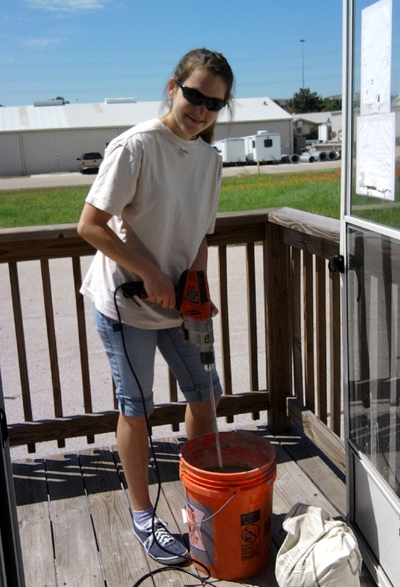Highlight Photo
Student Team Completes Seminal Research on Zero Energy Air Purification Materials
IGERT trainee Erin Darling is mixing a batch of clay-based paint for full-scale testing in an NSF-funded test house (UTest House)

Approximately 50-60% of the exposure of Americans to ozone of outdoor origin occurs in buildings, and indoor ozone leads to the formation of harmful reaction products at levels that often exceed indoor ozone concentrations. Four trainees and affiliates of the National Science Foundation’s Integrative Graduate Education and Research Traineeship (IGERT) program in Indoor Environmental Science and Engineering at The University of Texas at Austin have embarked on a novel study of “zero energy air purification” (ZEAP) materials to reduce human exposure to ozone and other pollutants in buildings without an energy penalty. They have identified materials that can reduce exposures to ozone by at least 50% (total exposure) without concomitant harmful by-products. One of these materials is a clay-based wall covering. In this image first-year IGERT trainee Erin Darling is mixing a batch of clay-based paint for full-scale testing in an NSF-funded test house (UTest House).
Credits: IGERT Trainee






